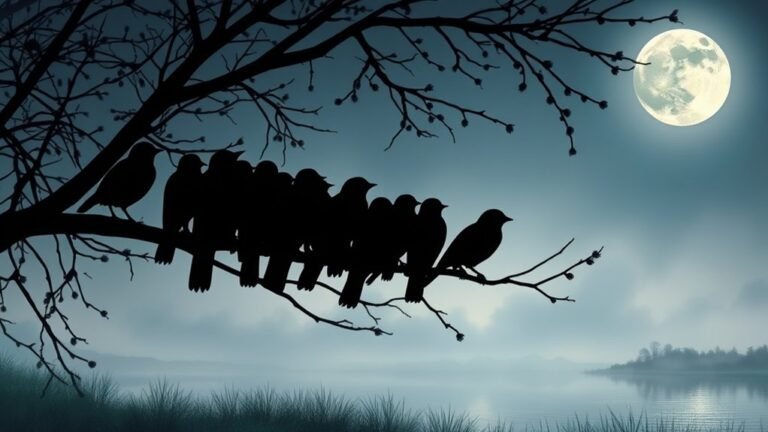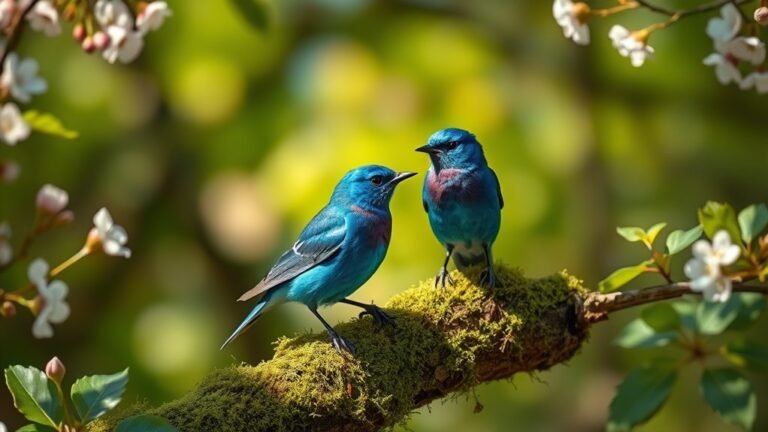How to Landscape Under Bird Feeders: Expert Tips
Landscaping under bird feeders can create a beautiful space for both birds and plants. By selecting the right plants and materials, you can build an area that is attractive and easy to maintain. Choose native and drought-resistant plants. These options will look great and help local wildlife. Want to learn how to do this? Here are some expert tips to improve your garden and draw in birds.
- Select the Right Plants: Choose native plants that thrive in your region. These plants require less water and support local bird species.
- Create a Clean Area: Keep the ground beneath the feeder clear of debris. This helps prevent mold and attracts birds to the feeder.
- Use Mulch: Apply a layer of mulch to suppress weeds and retain moisture. Organic mulch also adds nutrients to the soil as it breaks down.
- Plant Ground Covers: Use low-growing plants or ground covers to fill spaces. They can help reduce soil erosion and provide cover for birds.
- Add Water Sources: Incorporate a birdbath or small water feature nearby. Birds need water for drinking and bathing.
- Provide Shelter: Include shrubs or small trees nearby to give birds a place to rest and hide from predators.
By following these tips, you can create an inviting space that benefits both your garden and the birds that visit. Enjoy watching the feathered friends in their new habitat!
Key Takeaways
- Use ground cover plants that need little care to lower maintenance and prevent weeds under feeders.
- Add mulch to keep moisture in and stop weeds from growing in feeding areas.
- Select native plants to draw local wildlife and improve the look beneath feeders.
- Clean up regularly to remove old seeds and debris. This helps prevent unwanted growth and disease.
- Improve soil quality from time to time with organic matter. This supports a healthy landscape for both birds and plants.
Understanding Bird Feeding Habits

To attract birds to your feeders, understanding their feeding habits is important. Different bird species prefer different types of feeders and food. For example, finches enjoy nyjer seeds and prefer tube feeders. Woodpeckers like suet cakes or platform feeders. Knowing these preferences helps you set up your feeders effectively.
By offering a variety of food options, you can create a buffet that attracts many colorful birds.
Place your feeders in a way that considers the needs of the birds and their social behaviors. This thoughtful setup will improve your birdwatching experience and create a lively garden community.
Choosing the Right Location for Feeders
Choosing the right spot for your feeders can greatly improve your birdwatching experience. Look for a location that's easy to see while allowing you to enjoy the sights comfortably. Choose an open area where sunlight reaches the feeders; this attracts birds and brightens your backyard.
Place your feeders near trees or shrubs. These provide birds with cover while they eat, making them feel safer.
Avoid crowded areas, as they can limit bird movement. If you notice fewer birds visiting, try moving your feeders. Sometimes, a new location can bring your feathered friends back.
Selecting Low-Maintenance Plants

Selecting low-maintenance plants for the area under your bird feeders makes landscaping easier and creates a welcoming space for birds.
Choose drought-tolerant plants like sedum and blanket flowers. These plants need little water and bloom even in dry conditions, adding vibrant colors to your garden.
Consider pest-resistant options, such as lavender and yarrow. These plants help reduce the need for chemical treatments, keeping your garden safe for birds and pollinators.
By choosing resilient plants, you create a habitat that attracts birds while allowing you to enjoy nature without a lot of upkeep.
Make your garden reflect your love for birds!
Using Ground Covers to Simplify Cleanup
Bird feeders provide food for birds, but they can create a mess. A simple solution is to use ground cover plants like creeping thyme or micro clover.
These plants grow well in the shade from your feeder and help catch spilled seeds and bird droppings. They form a thick layer that prevents weeds from growing.
This means less cleaning for you and more time to enjoy watching birds in your yard. Ground covers not only make maintenance easier but also create a beautiful outdoor space where you can appreciate nature and connect with other bird lovers.
Implementing Hardscaping Solutions

While you enjoy watching birds at your feeder, think about adding hardscaping solutions to improve the area.
Using materials like bricks, pavers, or gravel can create clear zones in your bird-watching space. These surfaces help manage spills and droppings while providing a solid base for seating.
You can also use natural stone or decorative timber to edge the area, giving it a neat look and keeping seeds from spreading.
These additions can make your garden a welcoming place, where you feel connected to nature without the hassle of regular clean-up.
Transform your space into a functional and beautiful retreat for you and your feathered friends.
Incorporating Native Plant Species
After building a solid hardscape, enhance your bird feeding area with native plants that attract local wildlife and support biodiversity.
Native flowers like coneflowers and milkweed provide food for birds and other animals. Their bright colors also attract feathered visitors. Additionally, these plants help essential pollinators, creating a healthy ecosystem in your yard.
Adding native plants offers both beauty and a home for wildlife. You can enjoy watching birds thrive on the natural resources in your landscape.
This approach deepens your connection with nature and invites you to join a community that values and cares for the local environment.
Utilizing Decorative Gravel or Mulch
When creating your bird feeding area, consider using decorative gravel or mulch.
These materials can make your landscape attractive and easy to maintain. They help control weeds and keep the area clean.
You can choose from a range of decorative gravel options with different colors and textures to enhance the beauty of your garden.
Mulch can also add warmth and richness to your space.
Here are some options to consider:
- Colored gravel for a bright and striking appearance
- Rubber mulch for long-lasting use and eco-friendliness
- Natural wood chips for a traditional and earthy look
Selecting the right materials will help you create a welcoming space for both birds and yourself!
Creating a Feeding Zone With Edging
To make your bird feeding area more appealing and functional, add edging around the feeding zone. Edging defines the space and gives a neat look to the area. You can choose materials like natural stone, recycled plastic, or wood to match your garden's style.
The edging should be both attractive and useful. It helps keep fallen seeds contained and provides a stable surface for birds to land.
When placing the edging, think about how it fits with the surrounding landscape. This will create a friendly environment for both birds and visitors.
Thoughtful edging will turn your feeding zone into a lovely spot for birds and enhance your outdoor space.
Installing Birdbath Features
Adding a birdbath can make your bird feeding area more inviting.
Birdbaths provide water for birds and attract different species. Here are some birdbath styles to consider:
- Shallow basins: These are safe for small birds to splash and drink.
- Multi-tiered designs: These offer places for birds to perch and enjoy gentle water movement.
- Solar-powered fountains: These create soothing water features and add charm to your space.
Choose a birdbath style that fits your yard and enjoy watching the birds visit.
Designing With Colorful Annuals and Perennials
Adding colorful annuals and perennials around your bird feeders can make your outdoor space lively and inviting for birds and people alike.
Choose annual flowers that match your garden's colors. Bright flowers like zinnias and petunias attract more birds.
For perennials, select plants that bloom at different times to ensure ongoing color and food sources. Native plants are a great choice as they thrive in your local climate and support local bird habitats.
Mixing different plant heights and textures can make your garden visually interesting. For example, tall dahlias or echinacea can stand out, while low-growing sedums can fill in the space nicely.
Setting Up a Composting Area
Creating a garden improves its appearance and helps the local ecosystem. A compost bin is a great addition that promotes sustainability and feeds your plants.
You can:
- Turn kitchen scraps and lawn clippings into nutrient-rich compost.
- Attract beneficial insects that improve pollination and soil health.
- Reduce waste and feel more connected to your environment.
Setting up a composting area is easy and rewarding.
You'll provide nourishment for your plants while helping the earth. Enjoy the benefits of composting and watch your garden thrive.
Regular Maintenance and Cleanup Tips
Maintaining a clean and appealing area under your bird feeders is essential for your garden's health and the enjoyment of birds. Set a weekly schedule to clear away old seeds, droppings, and debris. This helps your flowers thrive and prevents weeds.
Gather cleanup tools like gloves, a small rake, and a sturdy bin for easy disposal. Adding a layer of mulch can help absorb messes and improve soil quality.
Frequently Asked Questions
What Types of Birds Are Attracted to Different Feeder Setups?
Different types of bird feeders attract specific birds. For example, tube feeders attract finches. Platform feeders bring in larger birds like cardinals. Knowing what birds prefer helps you create a welcoming space for them in your backyard. You can enjoy watching a variety of birds by choosing the right feeders.
How to Deter Squirrels While Feeding Birds?
To keep squirrels away while feeding birds, use squirrel-proof feeders. These feeders are designed to prevent squirrels from accessing the food. You can also plant peppermint nearby. Peppermint has a strong scent that squirrels dislike. By using these methods, you can create a space that attracts birds while discouraging squirrels. Enjoy watching the birds without the distraction of pesky squirrels!
Are There Specific Plants That Repel Certain Birds?
If you want to attract specific birds, choose plants that can deter unwanted species. Thorny shrubs can act as barriers, making it hard for some birds to access food. Plants with strong scents may also keep certain birds away. By selecting these types of plants, you can create a welcoming space for the birds you enjoy while reducing the presence of those you don't want.
What Is the Best Feeding Schedule for Optimal Bird Visits?
For the best bird visits, feed them regularly. During spring and summer, increase feeding frequency because birds are nesting. This routine encourages them to return and makes your backyard more lively. Enjoy watching the variety of birds that come to visit!
How to Handle Bird Feeder Safety During Extreme Weather?
During extreme weather, prioritize safety for your bird feeders. Secure the feeders to prevent damage. Regularly maintain them to ensure they are in good condition. Use durable materials for construction. Check for debris around the feeders to keep your feathered friends safe while they eat. Make their feeding area as secure as possible, so they can enjoy their meals without worry.

Ava is a bird enthusiast and nature lover who has spent countless hours observing and learning about the fascinating world of birds. With a passion for sharing her knowledge and inspiring others to appreciate the beauty of birds, Ava writes about her experiences and insights on avianadmirer.com.







